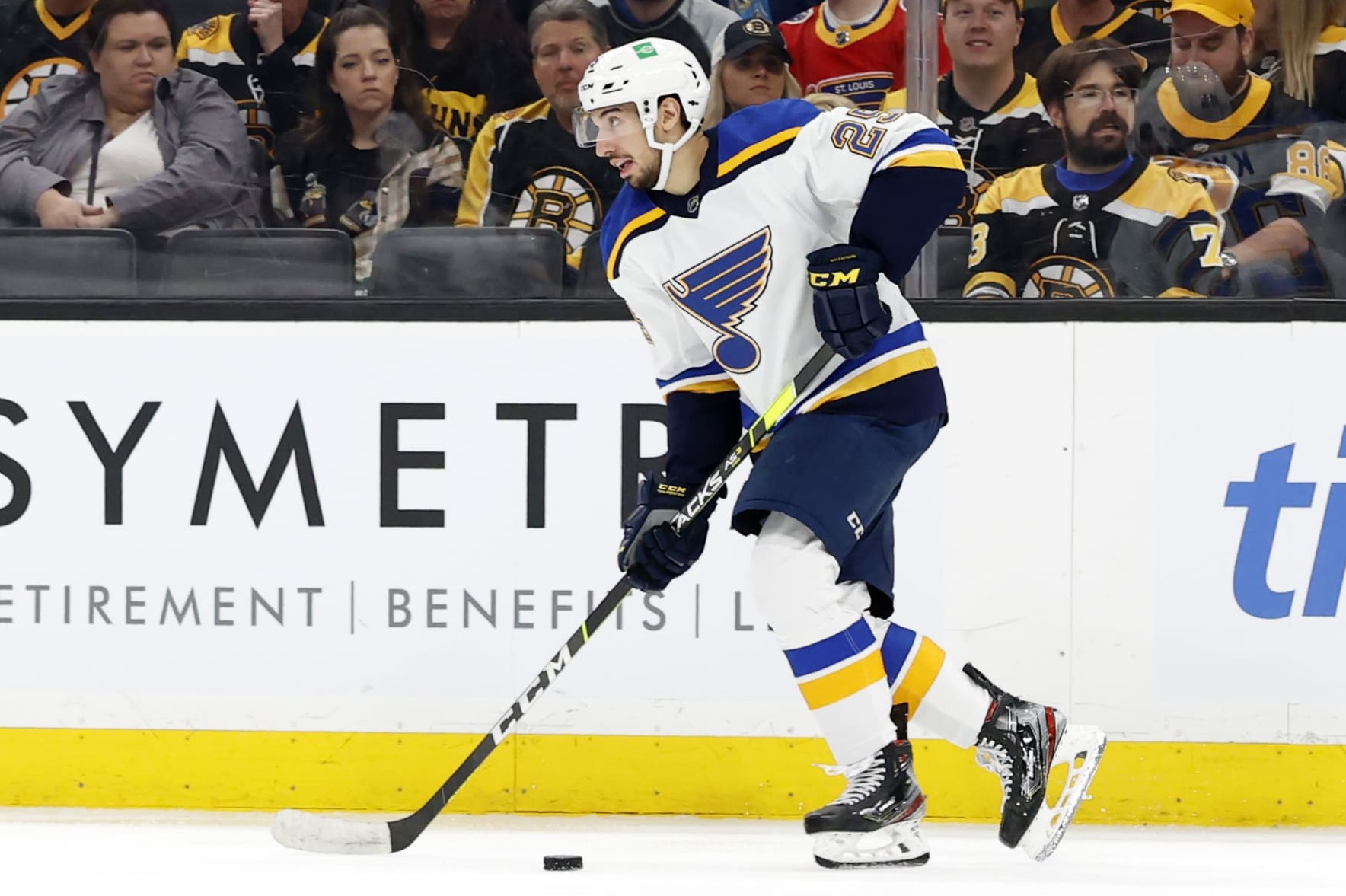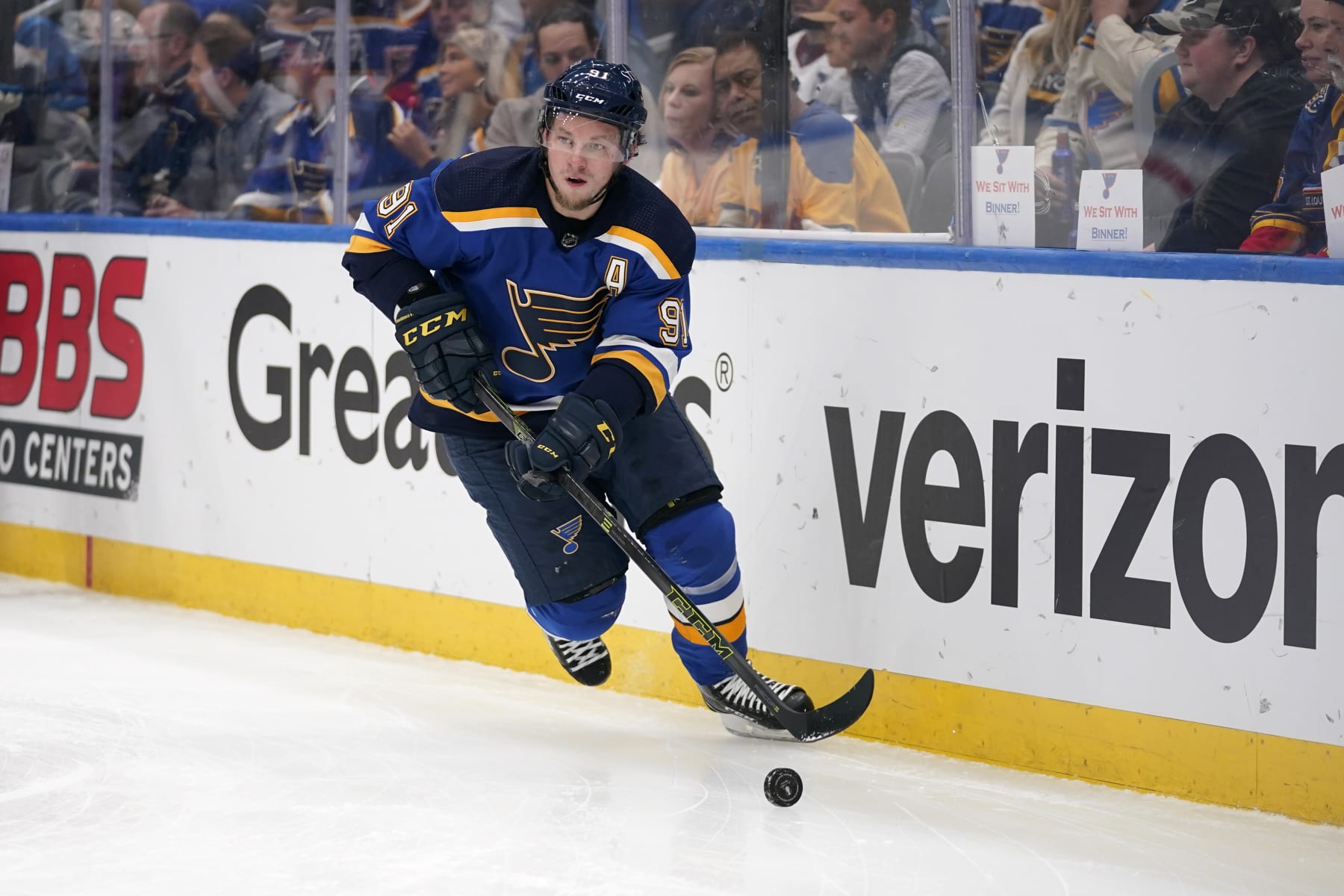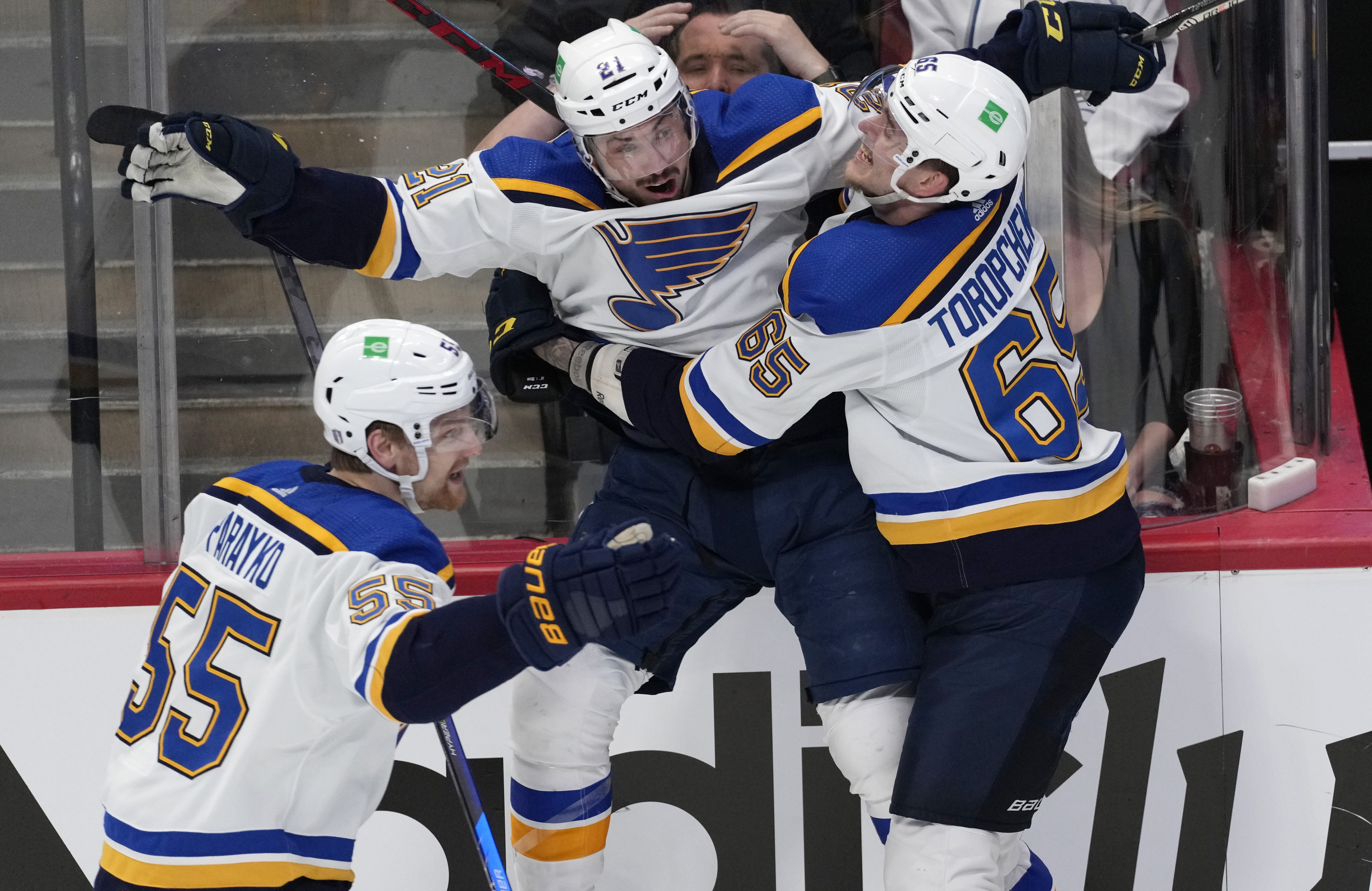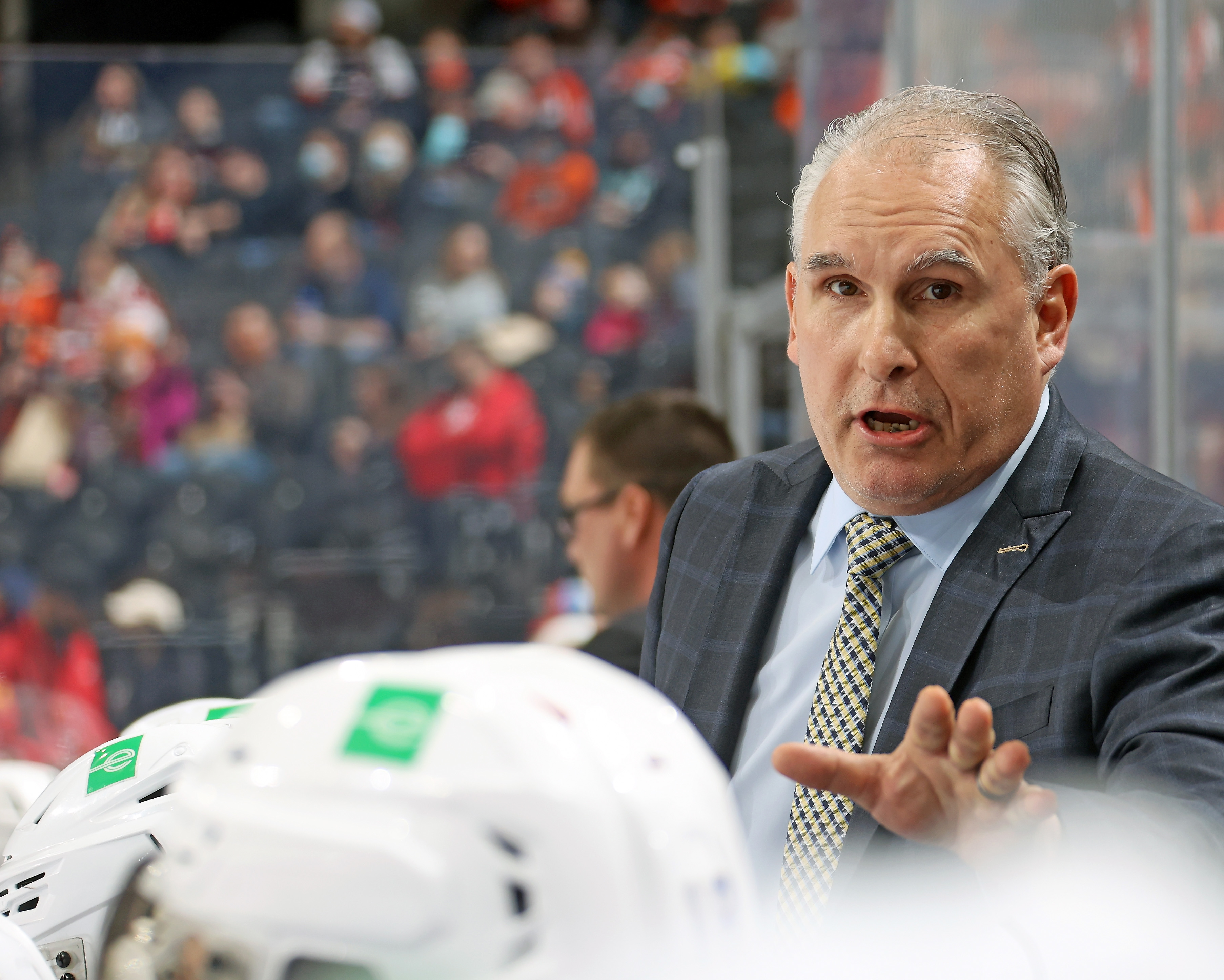Rangers Address Glaring Holes with Trade for Vladimir Tarasenko and Niko Mikkola
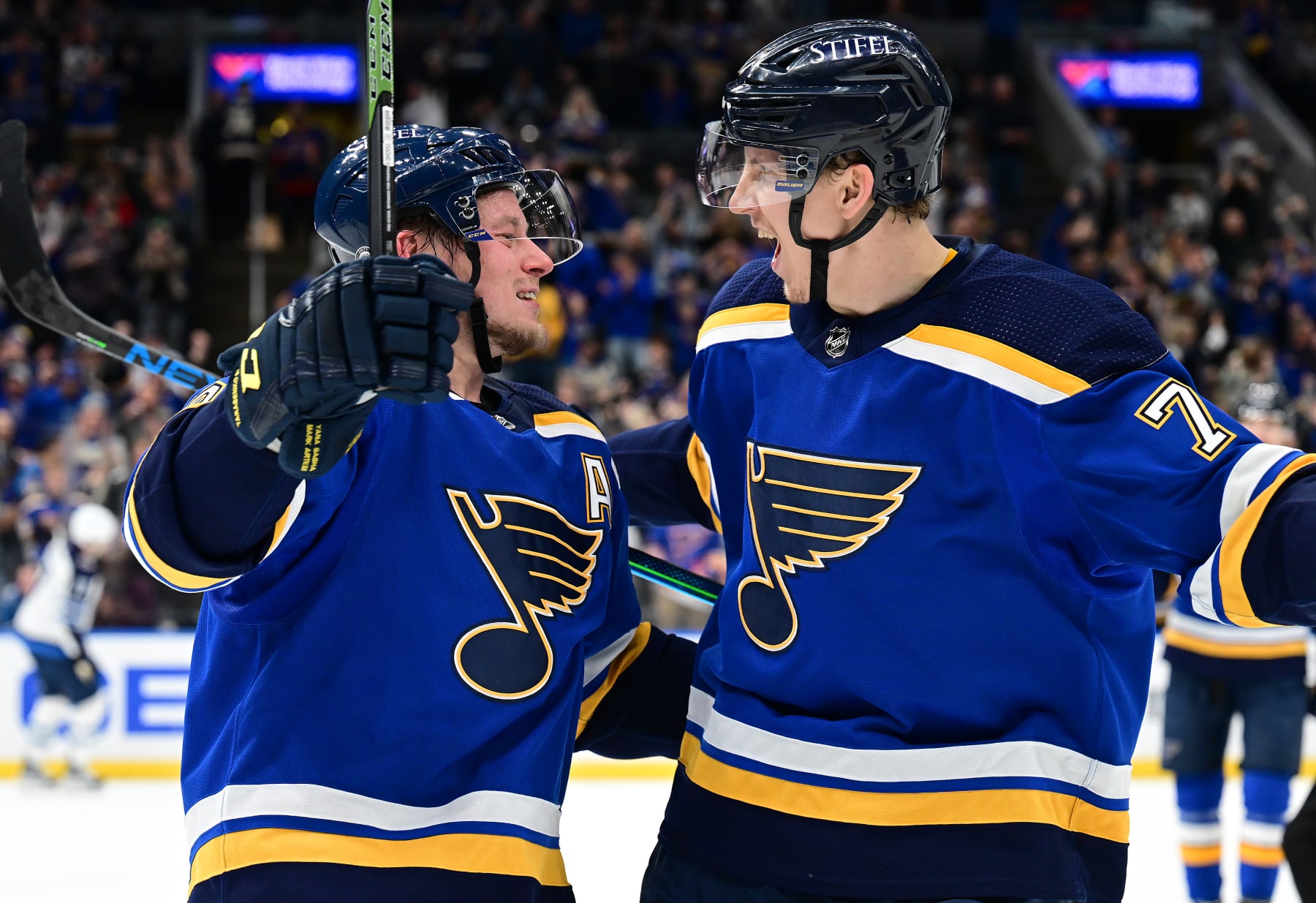
There were two near-certainties for the New York Rangers prior to the arrival of the March 3 NHL trade deadline: They were going to add a top-six right-wing, and they were going to add a third-pairing left defenseman.
General manager Chris Drury wasted no time getting both with one stroke.
On Thursday, the Rangers acquired star winger Vladimir Tarasenko and defenseman Niko Mikkola from the St. Louis Blues in exchange for a conditional 2023 first-round pick, depth winger Sammy Blais, minor league fodder Hunter Skinner and a 2024 fourth-round pick that will become a third if the Rangers make the playoffs.
It's a big move for a team that hopes to make a deep postseason run for the second consecutive season. Inarguably, they will forge ahead with a significantly better roster than the one with which they returned from the All-Star break.
Let's break down what this trade means for the Rangers.
Tarasenko
The Rangers entered the season with questions at right wing. At the halfway point, none had been answered. Prospect Vitali Kravtsov has not found his game, Barclay Goodrow and Jimmy Vesey belong in the bottom six.
Kaapo Kakko has been excellent in driving possession and providing offense, but the Rangers weren't going to win a Stanley Cup with a 40-point type of winger alone at the top of the depth chart.
In Tarasenko, the Rangers are getting a top-six scoring wing. Following two seasons torpedoed by shoulder injuries, the Russian returned to form last year, potting 34 goals and adding 48 assists over 75 games.
He hasn't quite matched that this season, with 10 goals in 38 games, but a 63-point pace over 82 games is still first-line quality.
There is plenty of reason to believe the best is yet to come. His 9.7 percent shooting percentage is well below his prior career average of 12.7. More importantly, the Blues are a mess. Per Evolving Hockey, the team ranks 26th in the league by expected goals for.
There is a reason the Blues began the liquidation process this soon.
The Rangers are a superior offensive team and whatever deficiencies existed will be mitigated with his presence. If Artemi Panarin, Mika Zibanejad and Adam Fox are feeding him in shooting positions? Chances are he's going to collect goals.
More to that point, the Rangers' power play—the team's biggest reason for success last season aside from goaltender Igor Shesterkin—has taken a step back. This is for a number of reasons, but a big one is that other teams have seen enough to know how to best defend the Blueshirts' top unit.
The go-to has been setting up Zibanejad for the one-timer above the left circle. It still works, but opposing teams are countering by shading toward Zibanejad's side.
Fox and Panarin are hardly slouches when it comes to shooting the puck, but they both display a level of discomfort at being the one to put the puck on net. Certainly, neither has elite shooting ability from distance. The opposition sees giving them space in order to close down on Zibanejad as the lesser of evils.
It particularly gives room to Panarin, who plays above the right circle, and his right-handed shot is not an effective threat. As Zibanejad shows, an off-handed player is best above each circle because it allows him (or her) to receive passes across the body for a quick release.
Tarasenko, a left-handed shot, seamlessly fits that role.
Head coach Gerard Gallant has to figure out the new power-play alignment, but if he moves Tarasenko to that right circle, then he'll be installing the credible shooting threat the Rangers need on that side. Opposing penalty kills will no longer be able to cheat toward Zibanejad.
Panarin and Tarasenko are close friends, and there is good reason to believe they'll be a great match on the ice. Panarin prefers to be the playmaker, and Tarasenko loves to shoot. Aside from joining a better team, the four-time All-Star could be reinvigorated by a new environment.
Mikkola
Tarasenko will deservedly get all of the headlines, but with Mikkola, Drury filled, pound-for-pound, the team's biggest deficiency.
Ryan Lindgren and K'Andre Miller form a robust left side of the Rangers' top pairings. Finding someone to round out the defense has been a disaster. Prospect Zac Jones started the season with the job but struggled and was sent down in early December.
Libor Hájek, acquired as a prospect from Tampa Bay in 2018, continued to prove he is not an NHL defenseman in his 16 games. The Rangers finally waived him Thursday after five seasons in which he failed to lock down a roster spot. Veteran Ben Harpur cannot handle the puck or skate well enough. He is not NHL-caliber.
Braden Schneider, 21, has done a remarkable job on the right side given the incompetence he has had to deal with all season.
Mikkola won't stand out on a night-by-night basis, as his game is vanilla. The 6'4" defenseman is a non-factor offensively. What he does bring, though, is a solid shutdown skill set. He rubs players out of possession along the walls. He throws big hits but doesn't run out of position to do so.
In fact, he needs little momentum to toss puck-carriers to the ice. The Finn snuffs out puck-carriers along the perimeter and breaks play to a halt so a teammate can retrieve the now loose puck.
Mikkola has struggled this season, but, as noted, the Blues are in disarray. Even by this year's subpar standards, Mikkola has played like a conventional NHL sixth defenseman, and in years past his defensive-minded game was well above the NHL average.
If he can return to that form, then he'll be a tremendous asset on the third pairing. At the bare minimum, he's not going to be the guy who blows it for the team. That's really all that Gallant needs on that third-pairing spot next to Schneider.
Analyzing the Cost
The Rangers had both their own and Dallas' first-round pick in 2023. St. Louis will receive whichever one is later in the draft, per NHL.com's Dan Rosen. Based on the trajectories of both teams, the pick should fall somewhere in the range of No. 25 to No. 32. The Rangers also included a 2024 third-round pick.
The Rangers acquired Blais from the Blues in 2021 as part of a return for Pavel Buchnevich. It was a horrible trade at the time, and it looks even worse in hindsight.
Blais did not score a single goal in 54 games with the team. He will be an unrestricted free agent at the end of the season. Hunter Skinner is an ECHL defenseman who was included presumably because the Rangers wished to remain at 49 contracts and safely under the 50-contract limit that teams are beholden to.
For the sake of simplicity, let's isolate the trade into components. Mikkola for the 2024 third-round pick is fair value.
That leaves the first-round pick for Tarasenko. Among recent trade-deadline rentals who cost a first-round pick plus more are Ben Chiarot (2022), Nick Foligno (2021), David Savard (2021), Brandon Montour (2019), and Tomas Tatar (2018). None of these players measure up to Tarasenko.
To acquire a player of his caliber, the Rangers would have usually needed to part with a first-rounder plus a prospect or another early pick. For certain, Tarasenko's full no-trade clause hamstrung Blues GM Doug Armstrong, but that's not Drury's problem. The Rangers landed Tarasenko at a measurably lower cost than what a player of his caliber is typically worth at the trade deadline.
Grading the Trade
Both Tarasenko and Mikkola fit the Rangers' needs like gloves.
Tarasenko was the Rangers' best option. San Jose's Timo Meier is the best player on the market, but the bidding war for him will be fierce. He would have also forced some tough salary-cap decisions beyond this season. Patrick Kane has not played well this season and is dealing with a hip injury.
Beyond those two, the market for wingers is putrid. Barring a surprise player on the market, the remaining options at right wing would have been a rehabilitation project in Brock Boeser, who also has a $6.65 million cap hit through 2025. After them, it's Jesse Puljujärvi and Ivan Barbashev, who are checking third-liners.
The Rangers also made intangible acquisitions via this trade: time and comfort. The days leading up to the deadline are pure chaos. The market can move at any moment. GMs who make decisions under immense pressure will often overpay for a player or lose out on their targets. Some team is going to end up empty-handed.
That team won't be the Rangers. Management can now approach March 3 knowing that most of its major business is done.
What's more, the Rangers will play 11 games between the time of the trade and the deadline. That's 11 games in which Tarasenko and Mikkola can help them win. It's also extra time for the duo to become acclimated and for the coaching staff to toy around and find the right combinations.
The Rangers found the best player on the market for their needs by a measure of cost-benefit analysis; Tarasenko is certain to make the team a lot better without the necessity of sacrificing heavy assets. A third-round pick for Mikkola is standard value, and far worse defensemen will go for a similar price in the next few weeks.
Both Tarasenko and Mikkola are rentals. If the Rangers exit the playoffs early, then it will be all for nothing. But the only way to avoid risk at the trade deadline is by doing nothing at all; something the Rangers could not afford given the makeup of the roster and short-term aspirations.
This is some smooth business by Drury.
Rangers Grade: A

